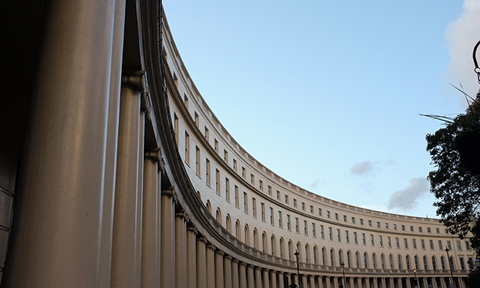This summer, there has been a wave of initiatives to put beauty back into housebuilding.

First, we had news of the first-ever national housing design audit to assess the quality and sustainability of large-scale developments. Then we had the 14-point action plan on housing from the Prince’s Foundation. Most recently was the interim report of the Building Better, Building Beautiful Commission, with a range of proposals to make beauty a priority in the planning system.
What unites the last two is a call for more traditional-style housing, which is widely seen as more popular – and better looking. By being typically more dense than sprawling new housing estates, some traditional styles can also help relieve housing pressures in cities such as London. So this renewed emphasis on the aesthetics of buildings, rather than just functionality, should be welcomed, if with caveats.
First, we must recognise that each area requires housing design particular to its needs, surroundings and established vernacular. What works for the Cotswolds, for example, may not work in the capital. One answer is to strengthen planning departments and provide them with the necessary resources, as the Building Better, Building Beautiful Commission suggests.
However, the ways that greater attractiveness will assist with greater delivery of homes is unclear. Few deny Britain is in the middle of a housing crisis, but greater certainty in the planning process must be at the centre of any solution.

We are definitely pleased to see a greater emphasis on good design and placemaking. Far too many residential projects feel as if they could have been built anywhere. There is a broader structural issue at play here, too. Research institute Create Streets, whose founding director is also chair of the Building Better, Building Beautiful Commission, recommends earlier consultation between the public and designers.
Buyers of tomorrow
At the moment, it is too often the same individuals who get involved, with most residents too busy to participate. This means outcomes can be skewed to the needs of a minority.
Ultimately, we must remember who we are building for – not just the buyers of today but also of tomorrow. While the mansion blocks, terraced houses and thatched cottages of yesteryear have an enduring appeal, this needs to be balanced against the needs of our rapidly changing society.
Some Building Better, Building Beautiful proposals, such as calling out ‘ugly’ developments, also risk stifling innovative design. Others, such as greater community participation, need thinking through in greater detail otherwise they will just empower Nimbys.
Yet many recommendations, such as simplifying the planning process to allow a greater range of entrants and better masterplanning, make perfect sense. There is also pent-up demand for traditional-style housing, as evident in the heritage premium on many older properties.
At Great Marlborough Estates, we have been pushing for higher design standards for some time. Our recent projects include the restoration of John Nash’s Regent’s Crescent (above), by Regent’s Park in London, and the redevelopment of a grade II-listed building in Fitzrovia into new apartments.
Beauty should not be a luxury – ambitious local authorities such as Camden are building high-quality council homes.
More beautiful housing will benefit everybody. Home is where the heart is, after all.
Dean Clifford is co-founder of Great Marlborough Estates






























No comments yet